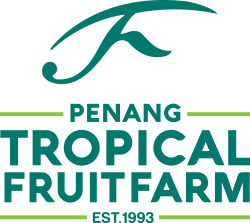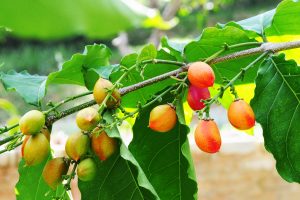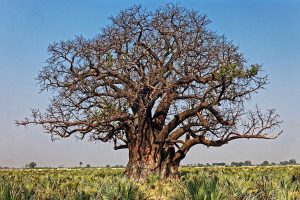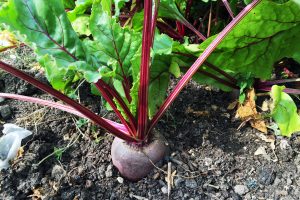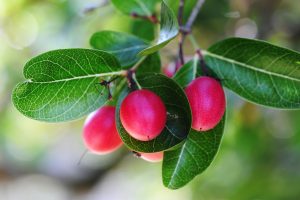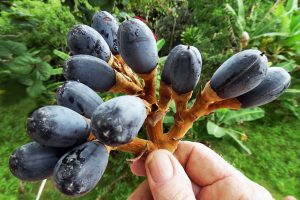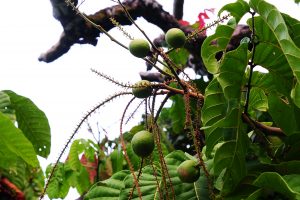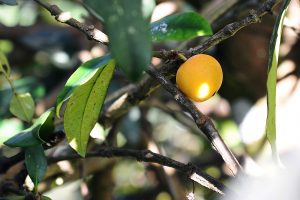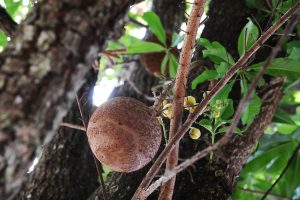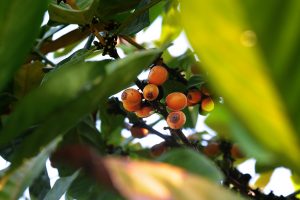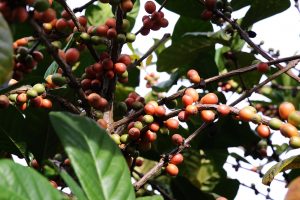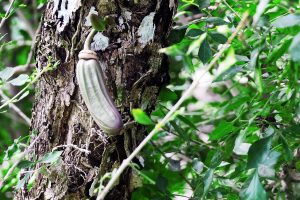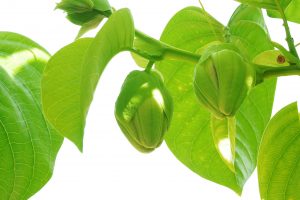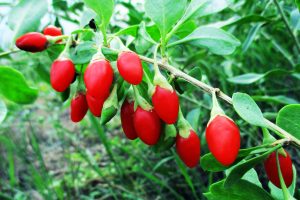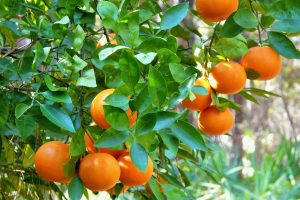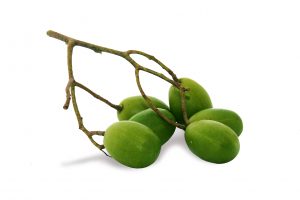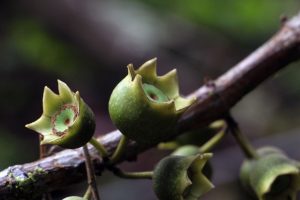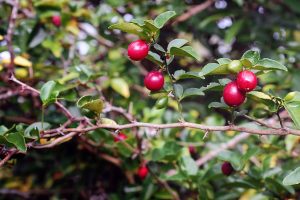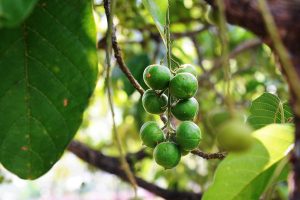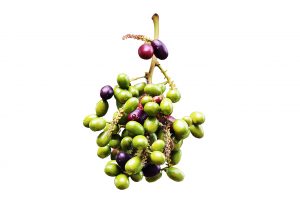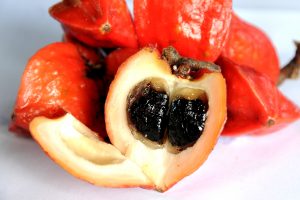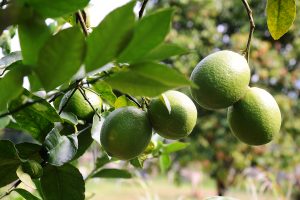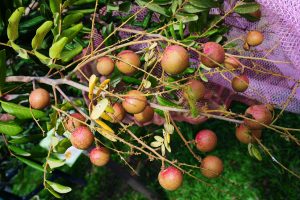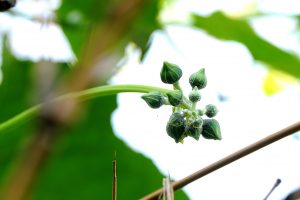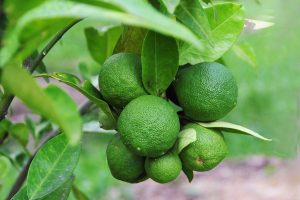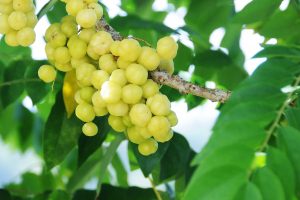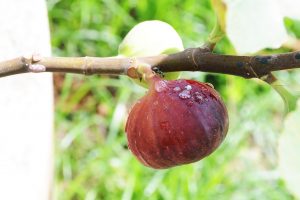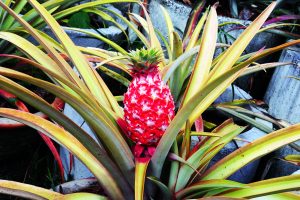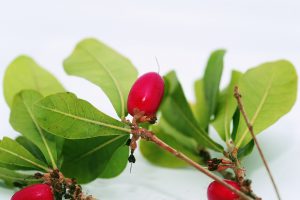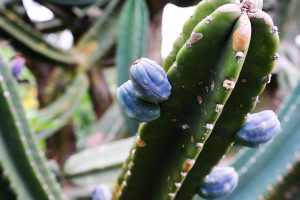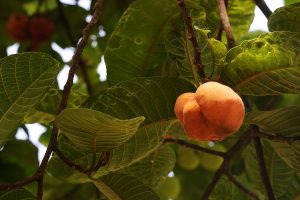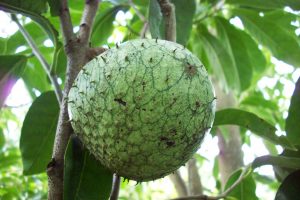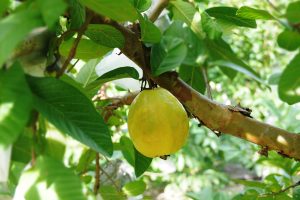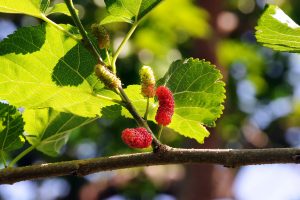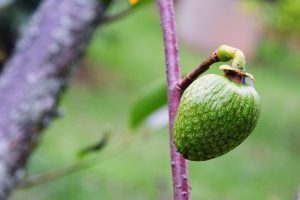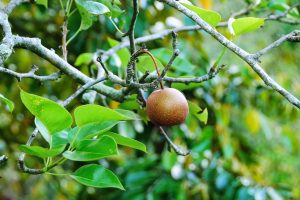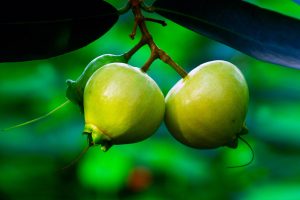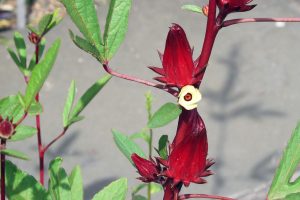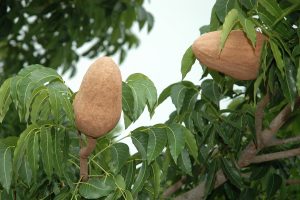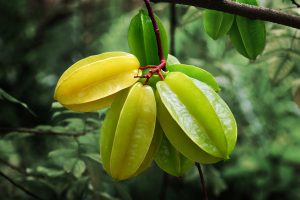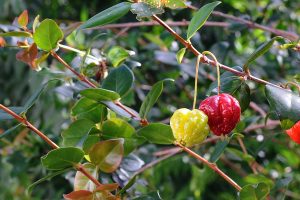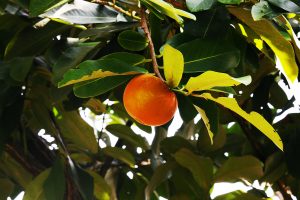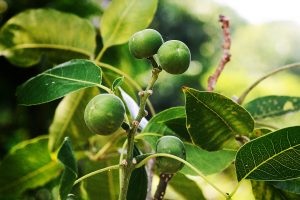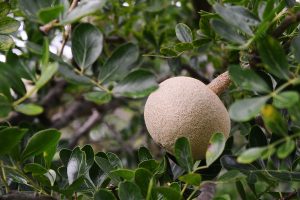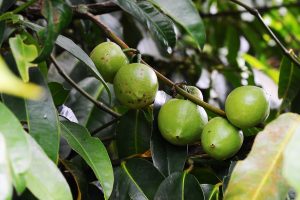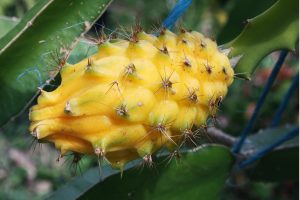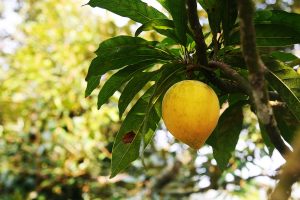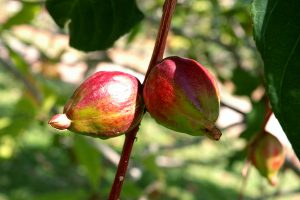| Origin | The species is a native of tropical west Africa – Sierra Leone, Ivory Coast, Gabon, Cameroon, Liberia, Guinea, Nigeria, Republic of the Congo, Equatorial Guinea, Ghana, Democratic Republic of the Congo Ghana. It has been introduced elsewhere into the tropics and naturalized in many countries including Australia. |
| Description | Katemfe is a rhizomatous, perennial herb, up to 3-3.5 m high, with slender, creeping, single or forked rhizomes. Leaf arise singly from each node of the rhizome. Petiole slender, subterete, 2-3 m high. |
| Growth Habitat | The species thrives in large clumps as undergrowth in the hot, humid tropical rain forest in the lowlands and coastal zone of West Africa. In Australia, it has naturalized in the edges of tropical rainforest in Northern Australia. |
| Foliage | The leaf is tough and ovate-elliptic in shape. It can be up to 60 cm long and 40 cm wide. It is of varying sizes depending on the plants age and habitat. Three leaf forms, morphologically distinct in size, texture and usage, are recognized by local users in Nigeria. |
| Flowers | The flowers are pale-purple in color. Inflorescences are single or simply branched spikes' and emerge from the lowest node. They are also bisexual, asymmetric, paired, or rarely borne singly. |
| Fruits | The fruit is pyramidal or trigonal in shape and crimson or bright-red in color when fully ripe. It may weigh 6 to 30 g depending on the number of seeds, usually one to three, within it. The seed is black, hard and impervious and looks like stone when dried. It is enveloped by a sticky thin, pale yellow basal aril, which contains the sweetening protein, thaumatin. |
| Harvest | Since fruits are formed at or below the ground harvesting involves searching in the substratum. It would therefore be helpful if the leaves could be clipped at or just before harvesting. Moreover those leaves could also be used for wrapping or for mat making. Harvesting the leaves for sale just before the dry season should therefore be economical. |
| Pruning | Within the first few months after planting, the rhizomes from adjacent plants intermingle and soon the space between the plants will be covered with shoots and leaves. Since the foliage covers the ground completely, weeds are suppressed and weeding is no longer necessary. Therefore weeding is only essential in the first few months after planting. |
| Propagation | It is relatively easy to propagate katemfe from rhizome fragments bearing one or two stools each. Due to the low percentage of germination and the slow growth of the seedling, for commercial propagation, the plant should be established from rhizomes and not from seeds. |
| Nutritional Properties | The fruit contains: - 10.04 g moisture - 21.08 g ash - 0.93 g fat - 11.53 g protein - 18.43 g crude fiber - 37.27 g carbohydrate - 0.34 g calcium - 0.30 g magnesium - 0.01 g iron - 0.21 g phosphorus - Tannin is present only in the leaf. - The leaf is rich in protein, fat and phosphorus. - Terpenoids, flavonoids, alkaloids, and cardiac glycosoides are significantly present in both the leaf and fruit. |
| Health Benefits | - The fruit is used as a laxative. - The seed is used as a medicine which causes vomiting. - The seed helps in pulmonary problems. - The leaf sap is used as antidotes against venoms, stings and bites. - The leaf and roof sap are used as sedative. - The leaf and roof sap are also used in treating insanity. - It is very suitable for diabetics. |
| Commercial Uses | The fruit is used as a sweetener because of the presence of thaumatin, a non-toxic, intensely sweet protein which is at least 3000 times as sweet as sucrose. Thaumatin is used as a sweetener and flavor enhancer by the food and confectionary industry. Substituting synthetic sweeteners, it is used as a non-caloric natural sweetener. The seeds produce a jelly that swells to 10 times its own weight and hence provides a substitute for agar. In West Africa, the lamina of the leaves is used for wrapping foods. The petiole is used to weave mats and as tools and building materials. The entire leaf is also used for roofing. |
| Nutritional Properties | The fruit contains: - 10.04 g moisture - 21.08 g ash - 0.93 g fat - 11.53 g protein - 18.43 g crude fiber - 37.27 g carbohydrate - 0.34 g calcium - 0.30 g magnesium - 0.01 g iron - 0.21 g phosphorus - Tannin is present only in the leaf. - The leaf is rich in protein, fat and phosphorus. - Terpenoids, flavonoids, alkaloids, and cardiac glycosoides are significantly present in both the leaf and fruit. |
| Health Benefits | - The fruit is used as a laxative. - The seed is used as a medicine which causes vomiting. - The seed helps in pulmonary problems. - The leaf sap is used as antidotes against venoms, stings and bites. - The leaf and roof sap are used as sedative. - The leaf and roof sap are also used in treating insanity. - It is very suitable for diabetics. |
| Commercial Uses | The fruit is used as a sweetener because of the presence of thaumatin, a non-toxic, intensely sweet protein which is at least 3000 times as sweet as sucrose. Thaumatin is used as a sweetener and flavor enhancer by the food and confectionary industry. Substituting synthetic sweeteners, it is used as a non-caloric natural sweetener. The seeds produce a jelly that swells to 10 times its own weight and hence provides a substitute for agar. In West Africa, the lamina of the leaves is used for wrapping foods. The petiole is used to weave mats and as tools and building materials. The entire leaf is also used for roofing. |
